
Looking for a Similarweb alternative?
Similarweb does a lot. It’s one of the most well-known tools in the competitive intelligence space, from market share data to app performance.
But if you’re seriously considering a tool like this, your main goal is probably understanding how competitors get traffic and grow.
And based on your use case, there are other tools that can give you what you need, sometimes with better data or a more aligned feature set.
The best full-featured Similarweb alternatives include:
- Semrush
- Ahrefs
- SpyFu
- Serpstat
- SE Ranking
They’re not full replacements, but they might be exactly what you need, depending on your focus.
A Quick Look: Top Similarweb Competitors
Short on time or just need a quick snapshot? This table breaks down the top websites like Similarweb by price and best use case.
It’s designed to help you narrow your options fast — especially if you already know what kind of intel you need.
| Similarweb Alternatives | Starting Price | Strengths |
| Semrush Traffic & Market Toolkit | $289/mo | Market + competitive intel |
| Ahrefs | $129/mo | Content + link analysis |
| SpyFu | $39/mo | Search + ad history |
| Serpstat | $69/mo | Multi-domain monitoring |
| SE Ranking | $65/mo | SEO-focused competitor tracking |
1. Semrush Traffic & Market Toolkit (formerly .Trends)
The Traffic & Market Toolkit is easily one of the most powerful competitive intelligence tools Semrush offers.
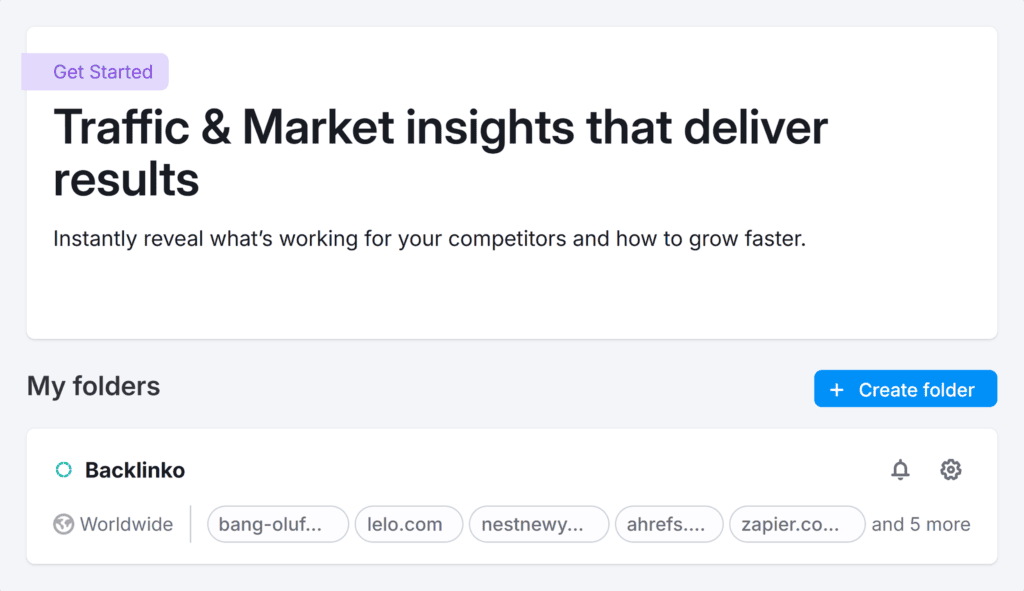
It shows you exactly how a site earns visibility.
Including where traffic comes from, which channels are working, and how performance shifts over time.
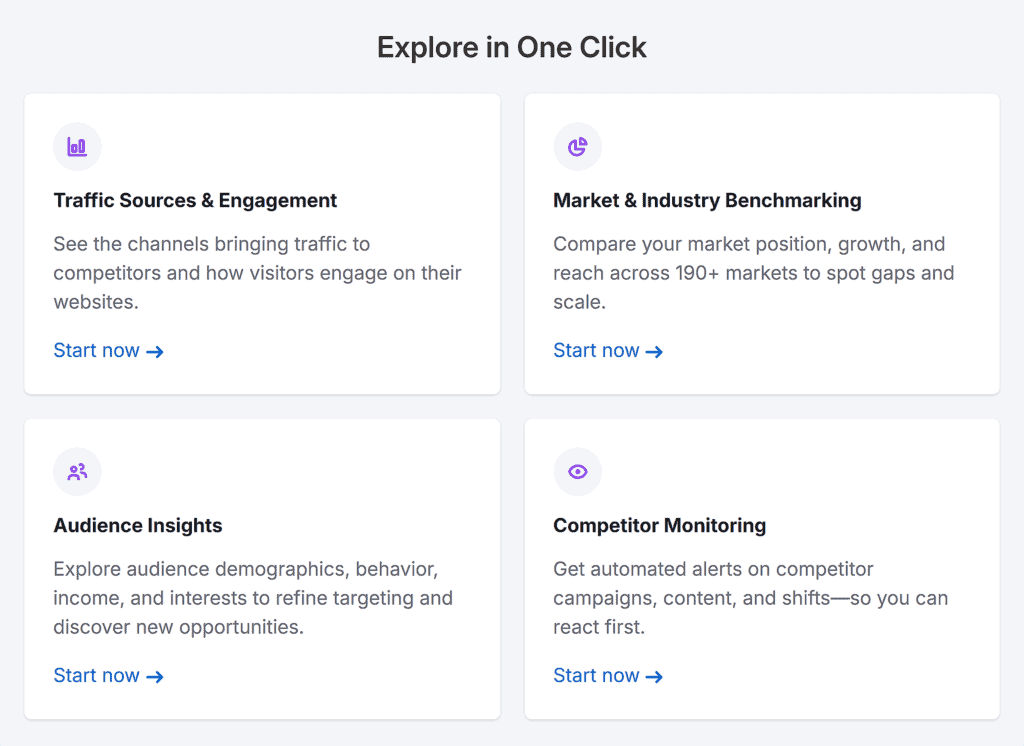
The dashboards are clean and focused. No digging or tab-hopping required.
Traffic Analytics is where I spend most of my time. It breaks down how a site earns traffic by channel, country, and device, and reveals where that traffic goes next.
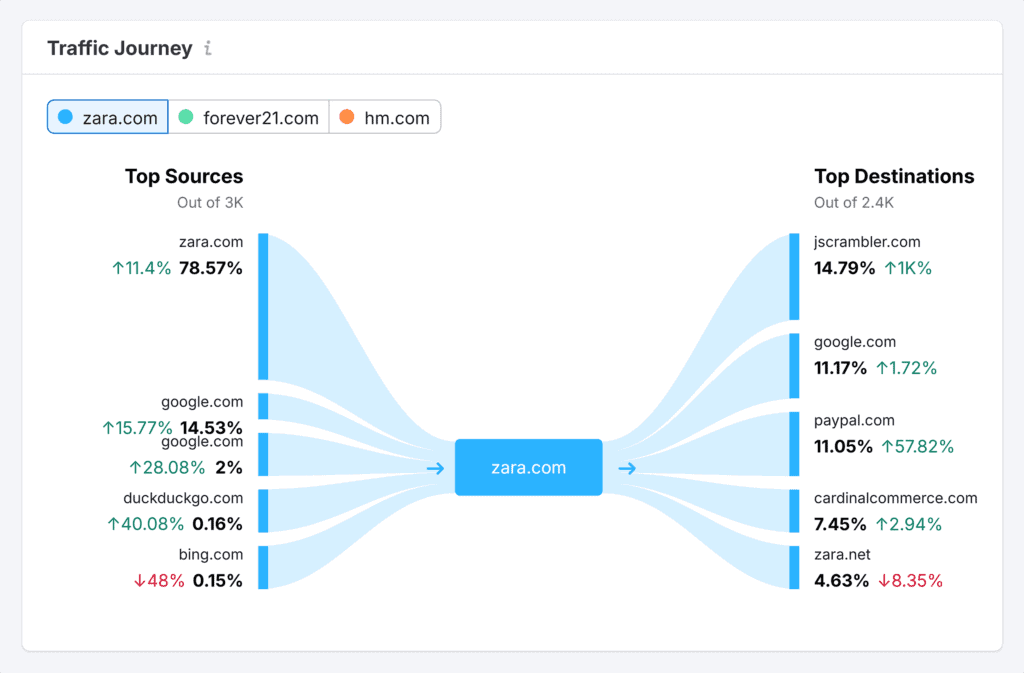
This makes it easy to spot paid pushes, referral spikes, or even hidden partnerships driving growth behind the scenes.
For example, say a competitor starts gaining market share out of nowhere.
You plug in their domain and find they’ve tripled referral traffic over the past three months, mostly from one high-authority site.
That kind of signal can steer your next move. Whether it’s pitching a partnership, building links, or defending your space.
You can also zoom out and see how traffic moves across an entire market.
The Market Overview report shows which domains dominate a vertical, who’s gaining traction, and where new players are emerging.
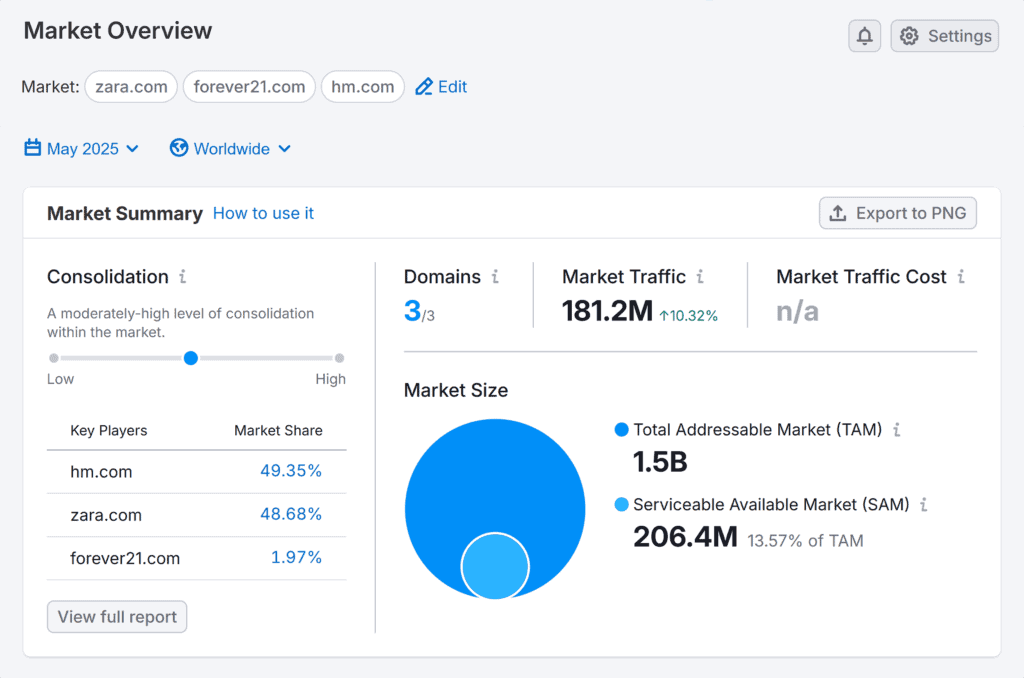
It’s helpful when you’re trying to size up a niche, validate an expansion opportunity, or stay ahead of fast-moving competitors.
You also get focused views of paid activity, including traffic trends and top-performing landing pages.
It’s a fast way to see what offers or campaigns are getting traction, and how competitors position them. This is useful when you’re planning your own seasonal push or watching how rivals roll out promotions.
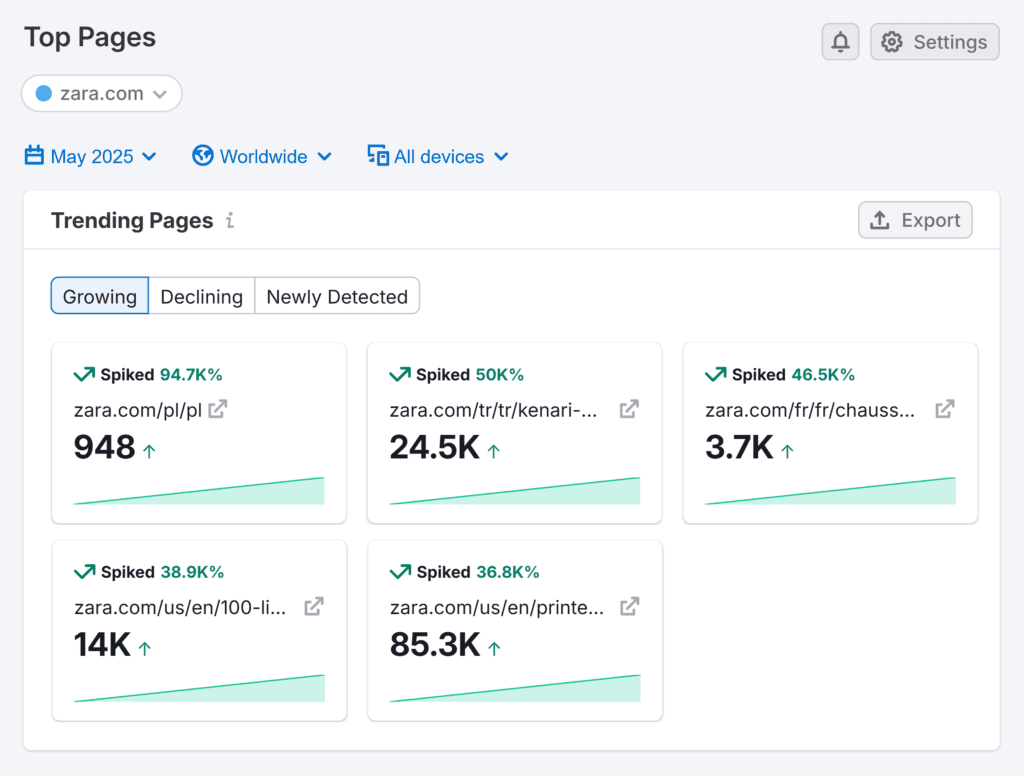
Who It’s Best For
The Traffic & Market Toolkit is a smart fit for in-house teams who need to report on market position, pitch strategy, or justify wins to leadership.
It’s also great for agencies pitching new business or running audits. You can quickly surface traffic gaps, highlight channel shifts, and show competitive movement without a full crawl or SEO teardown.
And if you’re exploring a new niche, it helps validate the opportunity before you commit resources.
Pros
You can zoom in on a single competitor or pull back to see how an entire market is shifting. Traffic is broken down by source, location, and device, so you get a full picture of what’s working and where.
The dashboards are clean and presentation-ready, making it easy to turn insights into reports or client-facing decks.
You also get daily data and multi-year history, so it’s just as useful for spotting trends as it is for quick checks.
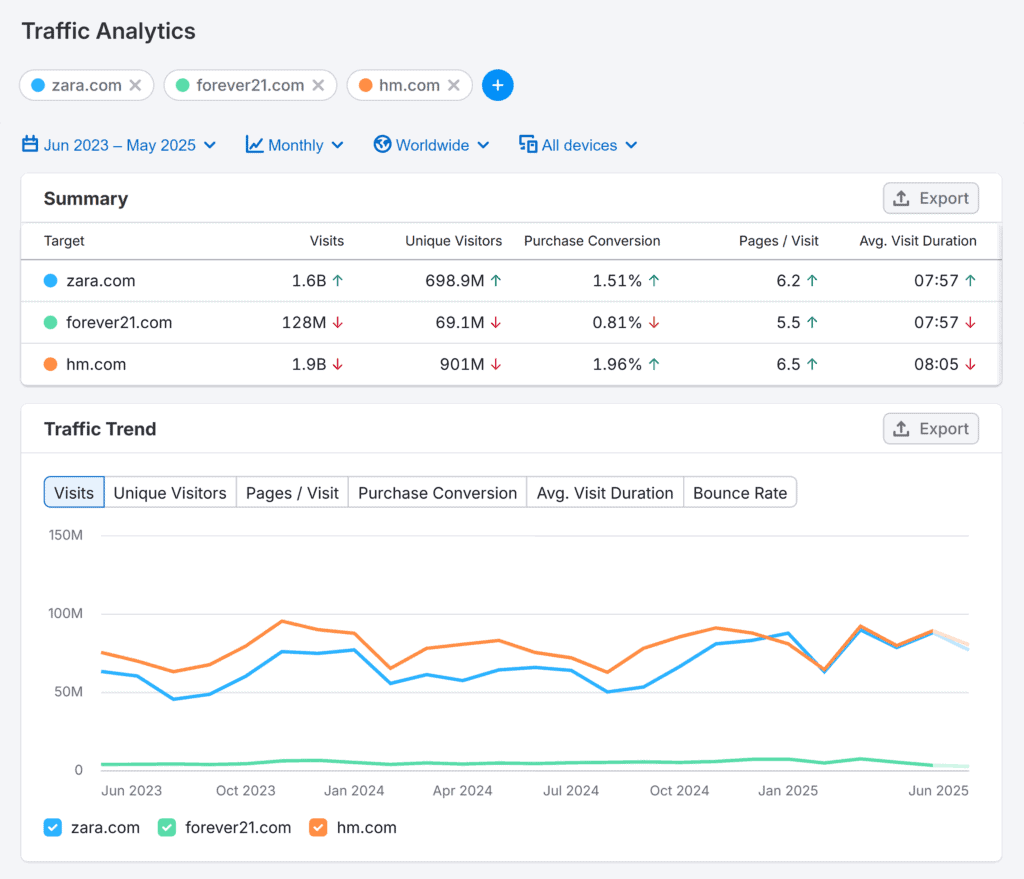
Cons
Traffic estimates aren’t always accurate for niche industries or early-stage sites. The intel is more reliable when you’re analyzing high-traffic domains in well-established markets.
How It Compares to Similarweb
Similarweb is built for enterprise analysts who need broad, top-down insight across entire industries and global markets. Its strength is in wide domain coverage and high-level category reporting.
The Traffic & Market Toolkit takes a more tactical approach.
It’s designed for SEOs and marketers who need intel they can act on fast, like spotting where a competitor’s traffic is surging, which audiences they’re attracting, or how a new market is shifting.
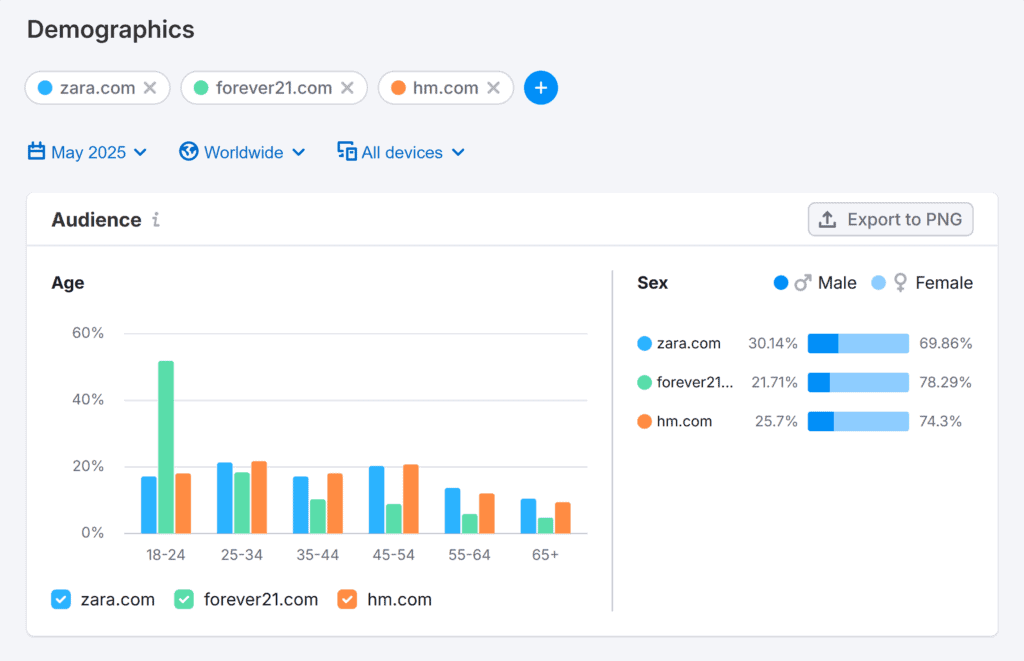
You won’t get the same breadth of market-wide data as Similarweb. But what you do get plugs directly into SEO, content, and campaign strategy. Without needing a data analyst to interpret it.
For a deeper breakdown, check out my full Semrush vs. Similarweb comparison.
Pricing
Semrush’s Traffic & Market Toolkit starts at $289 per month (per user), and can be purchased on its own or added to an existing Semrush plan.
It’s a serious investment.
But if you’re running competitive audits, pitching high-value clients, or making strategic decisions based on traffic trends, it’s worth the cost.
There’s also a free 14-day Semrush trial, so you can explore the data before committing.
2. Ahrefs
Ahrefs is known for its backlink data, and for good reason. It has one of the most trusted link databases in SEO.
But what makes it a strong Similarweb alternative is its Site Explorer tool.
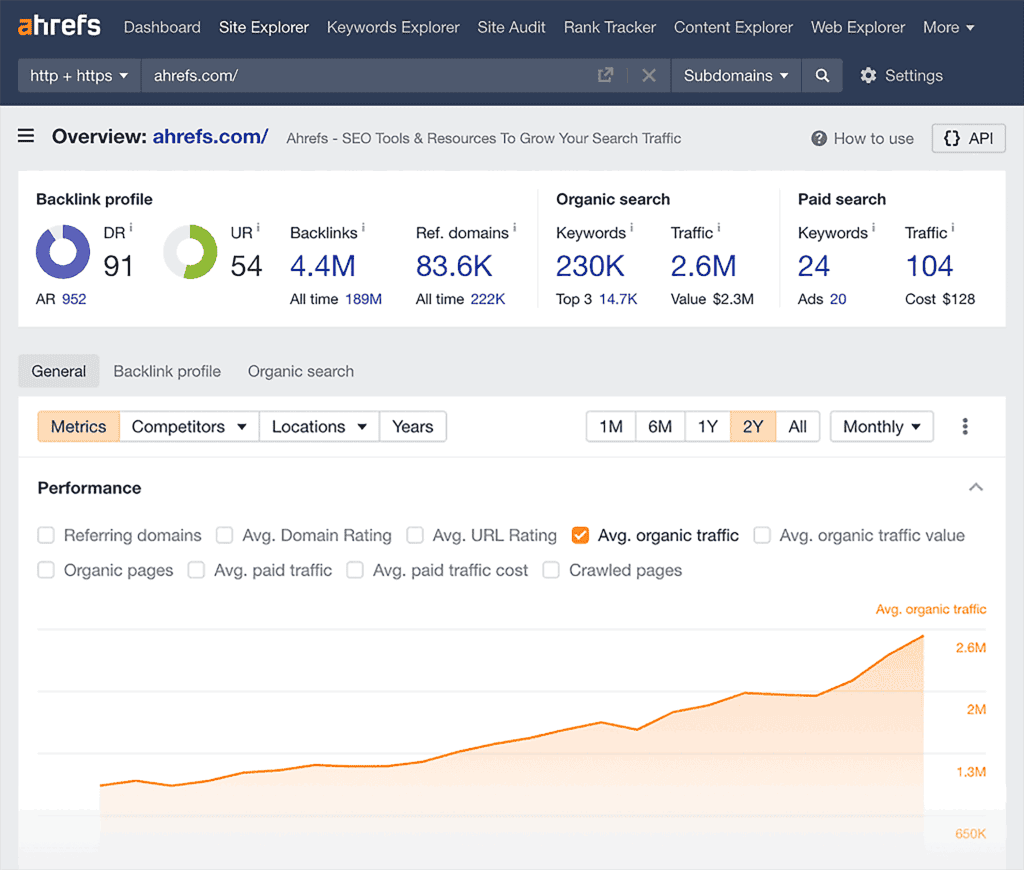
Plug any domain in and instantly see the pages driving traffic, the keywords they rank for, and how their backlink profile supports it all.
The real value is in how Ahrefs helps you map a competitor’s content and authority strategy.
You can:
- Track link growth over time
- Monitor which pages are picking up the most referring domains
- Spot new topic clusters as they gain traction
For example, say a direct competitor suddenly gains visibility around a new SaaS keyword you’ve never targeted.
You check their profile in Ahrefs and see five new blog posts, three solid backlinks, and a spike in organic traffic. This tells you it’s time to investigate, or move fast before they own the space.
The platform also alerts you when a competitor loses links or drops in rankings. And if they suddenly gain momentum, you’ll spot it right away.
Who It’s Best For
Ahrefs is a strong choice for SEOs who need quick, in-depth insights into how competitors are growing.
It’s also a great fit for consultants balancing several clients. You can jump into any domain and see what content is performing, which keywords are driving traffic, and how authority is being built.
Content teams can also use it to spot patterns in what’s working across top-performing pages. Then, shape their own strategies accordingly.
Pros
Ahrefs gives you a clear picture of how a competitor earns traffic, allowing you to identify the exact pages and links behind their growth.
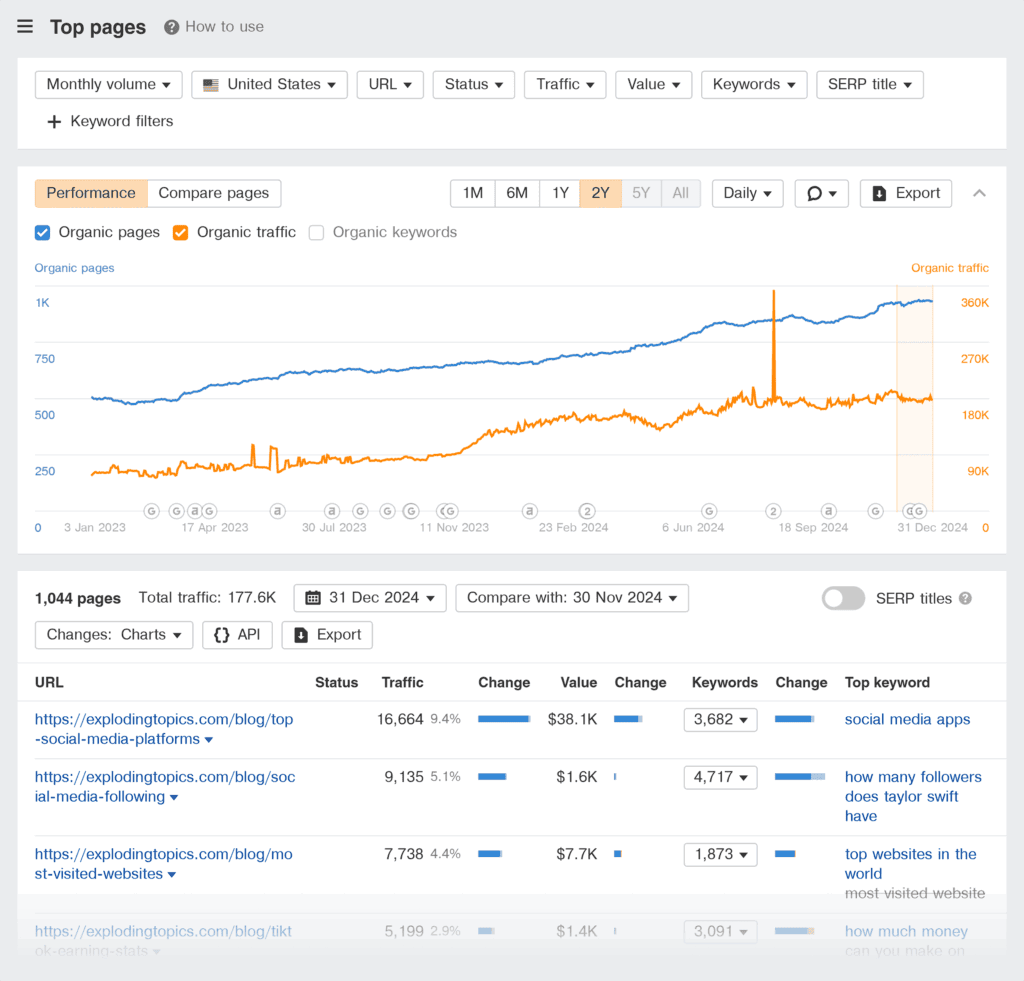
You’ll see changes over time, like sudden link spikes or keyword drops, so you can react before they pull ahead.
And because the data is organized by page and keyword, it’s easy to connect rankings to specific content and backlink efforts.
Cons
Site Explorer only shows one domain at a time, which makes it harder to understand how competitors relate to each other or where your brand fits in the market.
It doesn’t offer segmentation by channel, so you can’t easily isolate trends in organic, paid, or referral traffic.
And while you’ll see some Google Ads data, it’s limited.
You won’t get spend estimates, ad timelines, or deep campaign analysis like you would with a dedicated ad intel platform.
How It Compares to Similarweb
Ahrefs is designed for deep analysis of individual competitors. You get detailed insights into rankings, top-performing content, and backlink profiles.
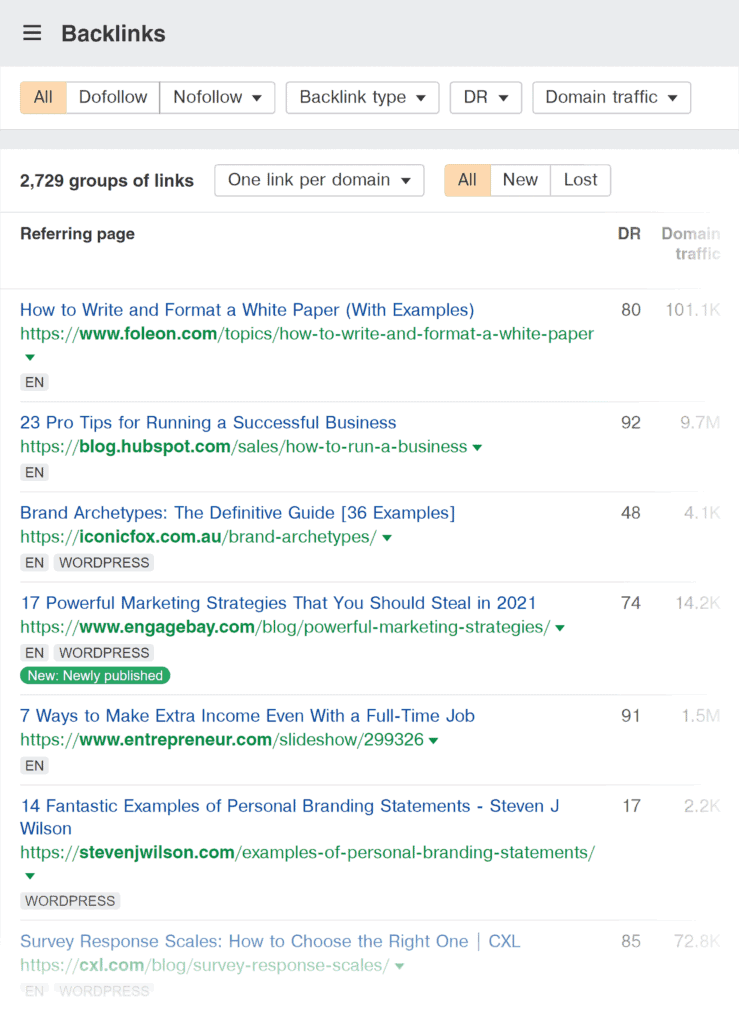
These are especially helpful when you need to understand why a competitor is gaining traction.
Similarweb focuses more on market-wide visibility. It shows traffic share by channel and audience behavior across entire categories.
Ahrefs doesn’t go as deep in these areas.
So if you’re mapping an industry or tracking overall market share, Similarweb is the better tool.
But if you’re looking to uncover how a single site is building traffic and authority, Ahrefs has the detail you need.
Pricing
Ahrefs starts at $129 per month for the Lite plan. Pricing is tiered based on both features and credit usage.
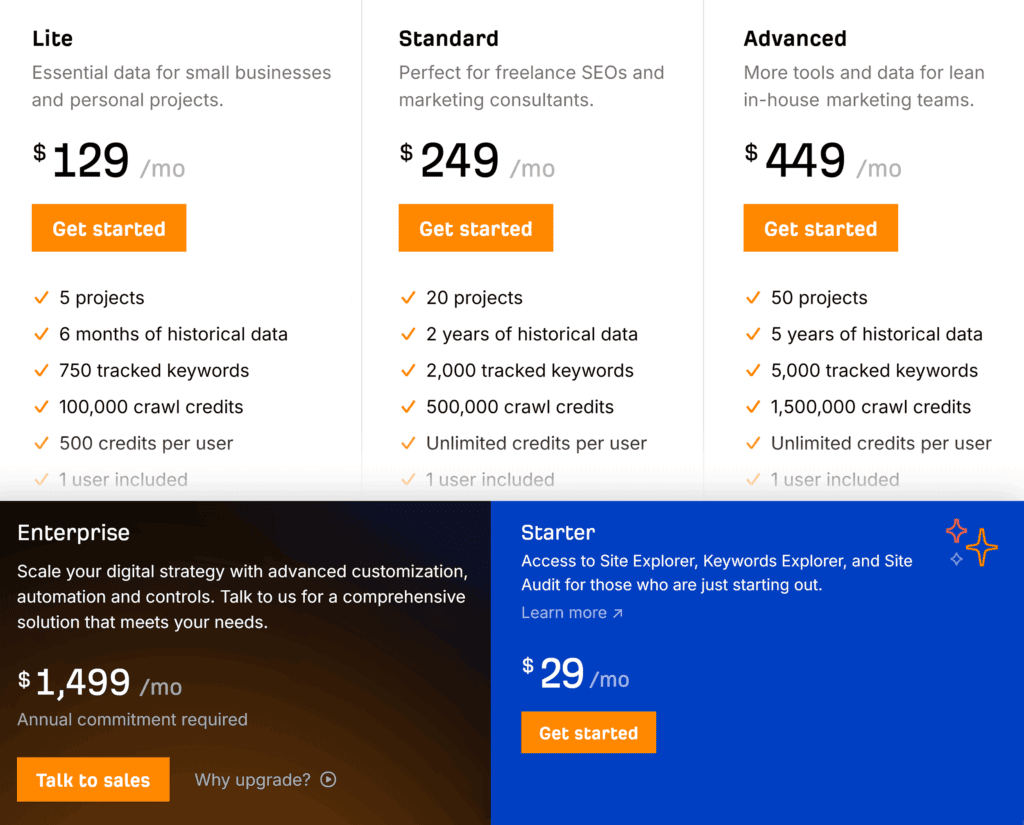
Credits are used every time you run reports, export data, or use advanced filters.
If you’re doing frequent research or working across multiple clients, it’s easy to hit your monthly cap faster than expected.
There’s no full-featured free trial. But Ahrefs does offer a limited free version, which lets you explore basic tools and data before upgrading.
3. SpyFu
SpyFu is designed to help you understand your competitors’ search strategy, both paid and organic, over time.
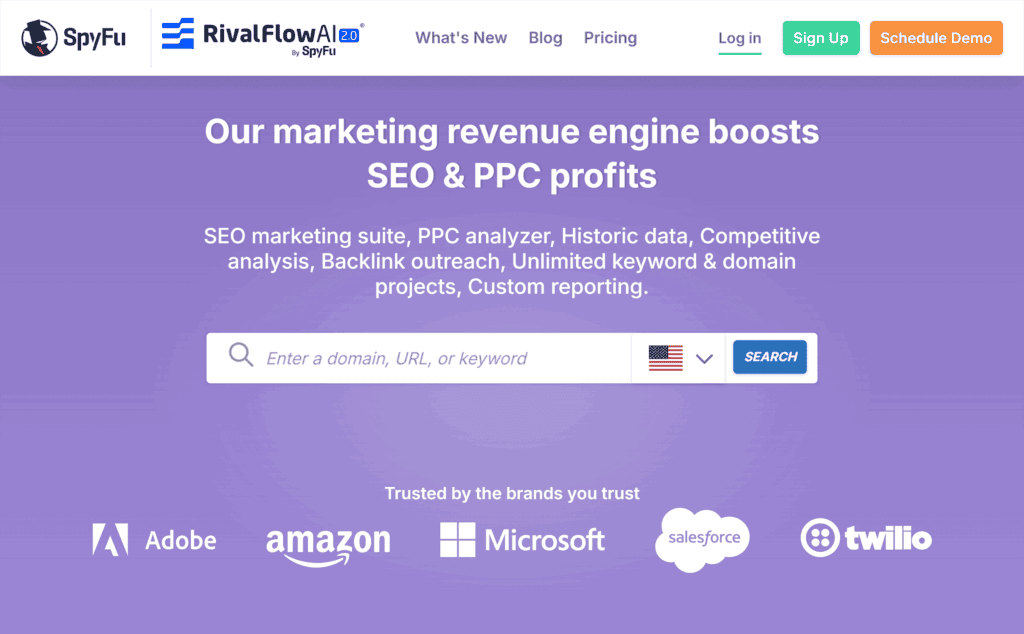
At first glance, it looks like a basic SEO and PPC tool. But once you dig in, it’s clear that historical data is where it shines.
Track which keywords a competitor has bid on, when they ran specific ads, and how rankings shifted across months or years.
It’s especially useful for spotting trends, drops, or pivots in strategy that might not be obvious in real time.
I’ve used SpyFu to compare domains, break down historical ad campaigns, and surface keywords that competitors have stopped targeting.

The platform makes it easy to trace patterns. Especially when you want to see how a competitor’s strategy has evolved.
Who It’s Best For
SpyFu is a strong fit for marketers who prioritize historical insight.
For example, if a competitor quietly stopped bidding on a key term last quarter, SpyFu can help you spot the shift and capitalize on the gap.
Pros
You get historical SEO and PPC data in one place. This makes it easier to find holes in your own strategy or highlight past wins and losses in a competitor’s.
The domain comparison features are practical, too.
I’ve used them to find shared keywords, detect weak spots, and build pitch decks with clear competitive opportunities.
Cons
SpyFu is best at surfacing long-term patterns for specific domains. But if you’re looking for broader market trends or audience segmentation, it falls short.
It doesn’t show traffic share by channel or help you compare performance across an entire industry.
How It Compares to Similarweb
Similarweb gives you an industry overview, which is great for understanding visibility, traffic share, and audience segments across industries.
SpyFu hones in on search behavior at the domain level. Track which keywords a competitor is targeting, how their campaigns change over time, and when they shift strategy.
You won’t see audience demographics or share of voice.
But if your goal is to analyze SEO and PPC decisions in detail, SpyFu offers more historical depth than most marketing tools in its range.
Pricing
SpyFu starts at $39 per month, making it one of the most affordable Similarweb alternatives for competitive research.
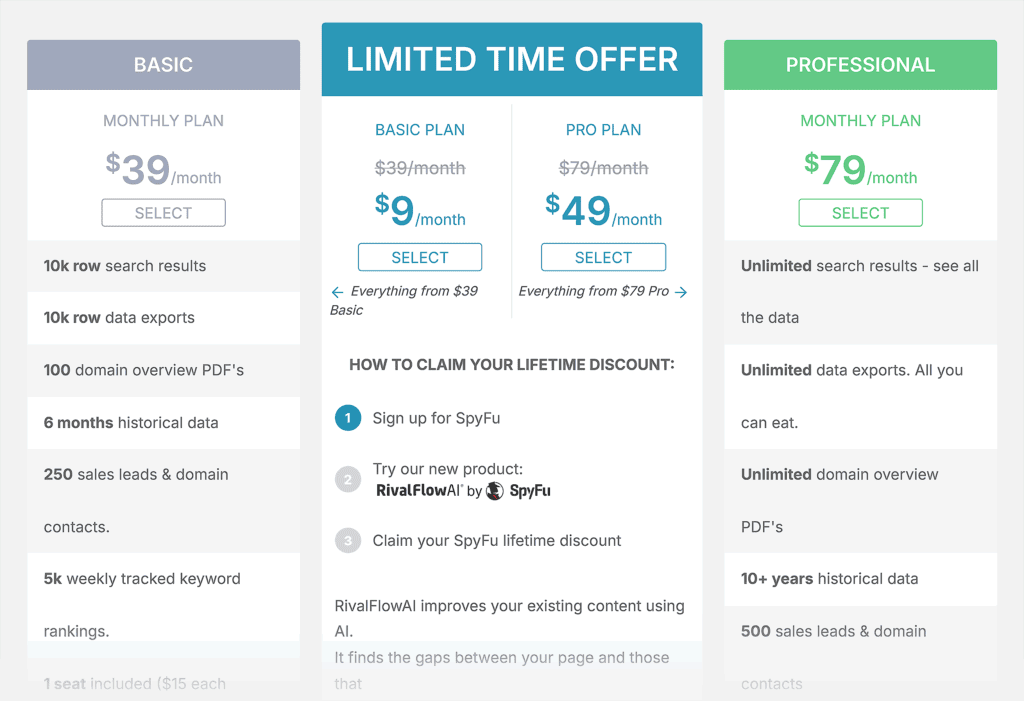
The entry plan includes up to 10,000 results for keyword searches, backlinks, and exports.
It’s a solid pick for teams who need competitive intel on a budget. Just keep in mind that if you’re running high-volume or frequent searches, you may hit limits fast.
If you’re looking for a free Similarweb alternative to explore SEO and PPC insights without committing, SpyFu also offers limited access to keyword and domain data at no cost.
4. Serpstat
Serpstat puts competitive tracking at the core of its SEO feature set. It’s built to help you monitor how multiple rivals rank, shift strategy, and gain or lose visibility over time.
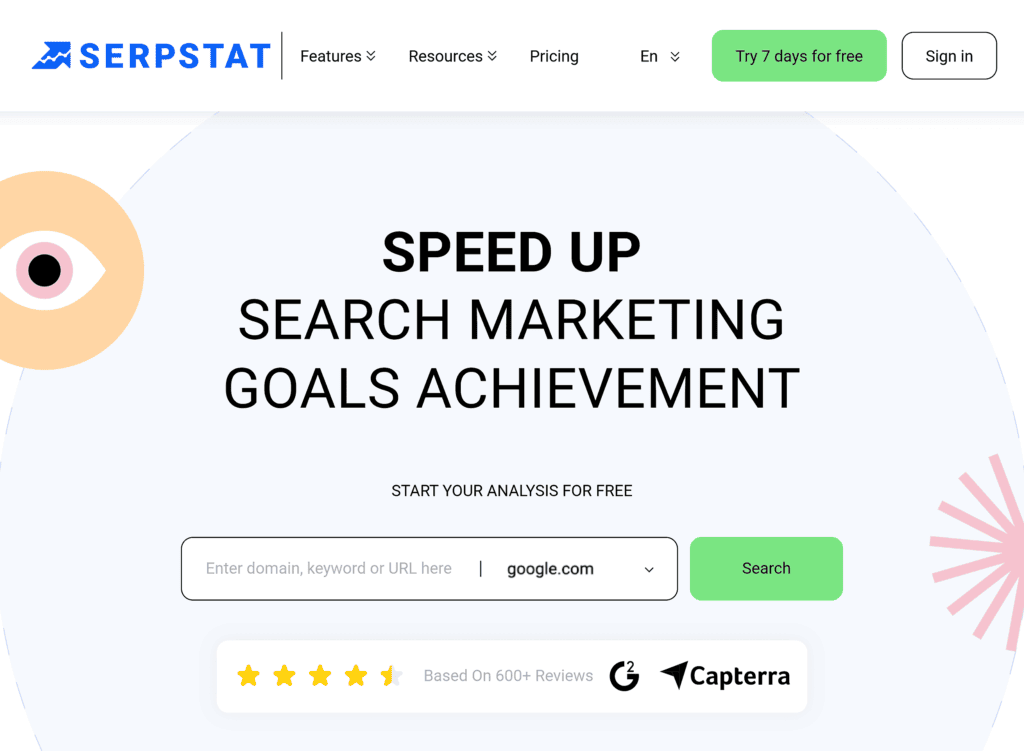
The Competitor Analysis module shows which domains are fighting for the same keywords, and how their rankings are trending.
Track which terms a site is gaining or losing, spot movement across SERPs, and compare keyword overlap.
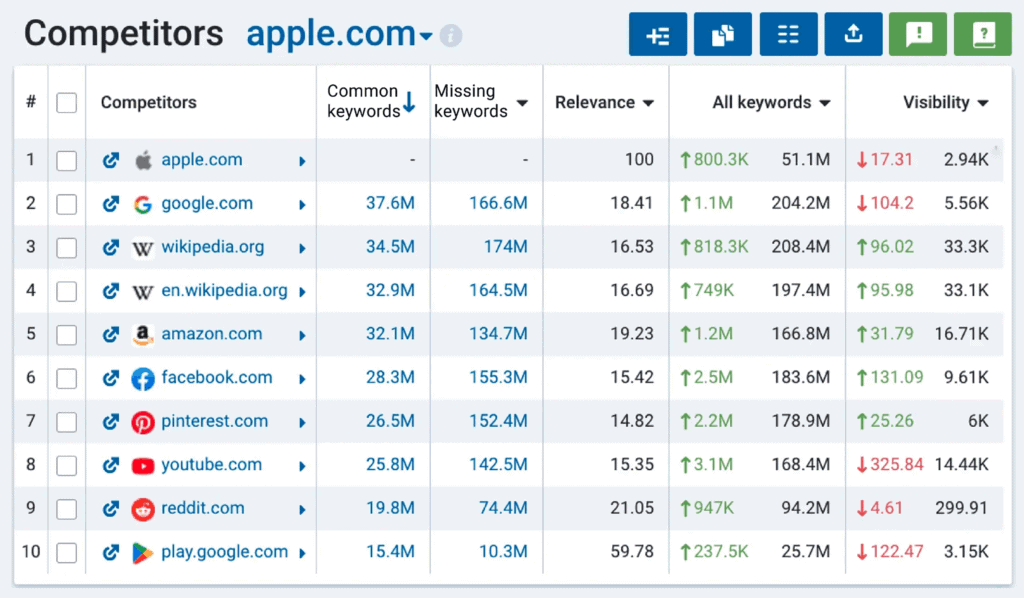
The Domain Analysis section surfaces top-performing pages, backlink trends, and changes in keyword reach.
It’s helpful when you need to understand how a site is building authority or when its growth starts to stall.
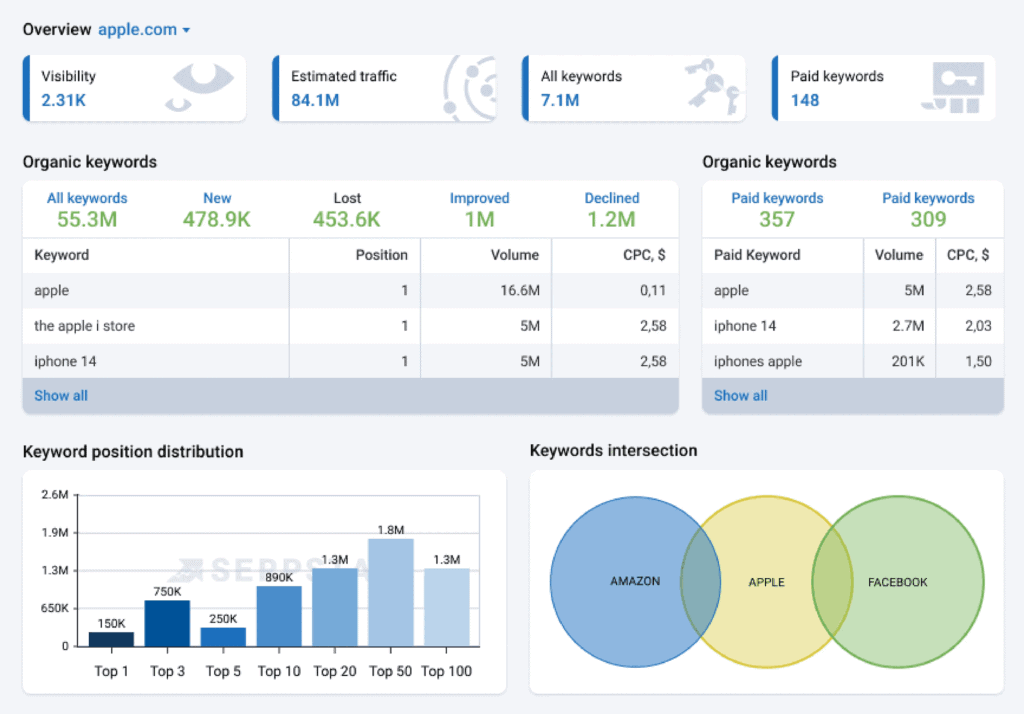
Another standout feature is Serpstat’s ability to track multiple domains side by side.
I’ve used it to compare competing client sites and catch when a rival starts pushing into new topics.
Who It’s Best For
Serpstat is a strong choice for SEOs managing multiple competitors or client sites in the same niche.
It’s helpful when you need to compare visibility trends across domains, monitor ranking shifts over time, or spot overlaps in keyword targeting, all in one place.
Pros
Serpstat highlights changes in keyword visibility as they happen. So, it’s easier to catch trends before they snowball.
I’ve flagged traffic spikes and traced them back to specific landing pages or content clusters. It’s helped me prioritize updates, launch counter-campaigns, and stay competitive in fast-moving niches.
Cons
Serpstat shows when rankings move — but not always why.
You’ll see a visibility spike or drop, but it’s harder to tell if that’s due to link building, new content, or technical changes.
Its backlink data can also feel shallow.
It gives you referring domains and anchor text, but not the kind of historical link context or authority scoring that other tools provide.
If backlinks are central to your strategy, you may need to supplement with a more specialized platform.
How It Compares to Similarweb
Similarweb is built for broad competitive intel. Serpstat takes a narrower approach.
It helps you monitor how known competitors are gaining or losing ground in search, keyword by keyword, page by page.
You won’t get full industry data or behavioral insights.
But if your goal is to track how direct rivals are adjusting their strategy, Serpstat surfaces that movement faster.
Pricing
Serpstat starts at $69 per month. The base plan includes competitor research, keyword tracking, and backlink analysis.
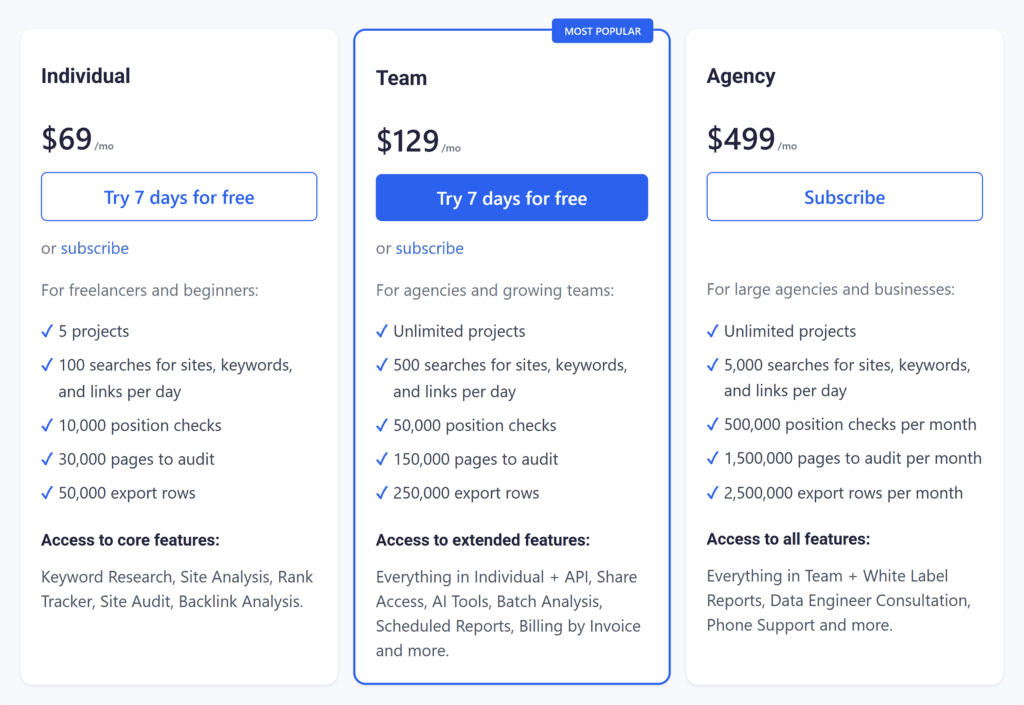
Usage limits are based on a credit system, and plans scale up based on team size and data needs.
There’s also a seven-day free trial if you want to explore the platform first.
5. SE Ranking
SE Ranking’s Competitor Analysis Tool is a streamlined Similarweb alternative built specifically for SEO and PPC research.
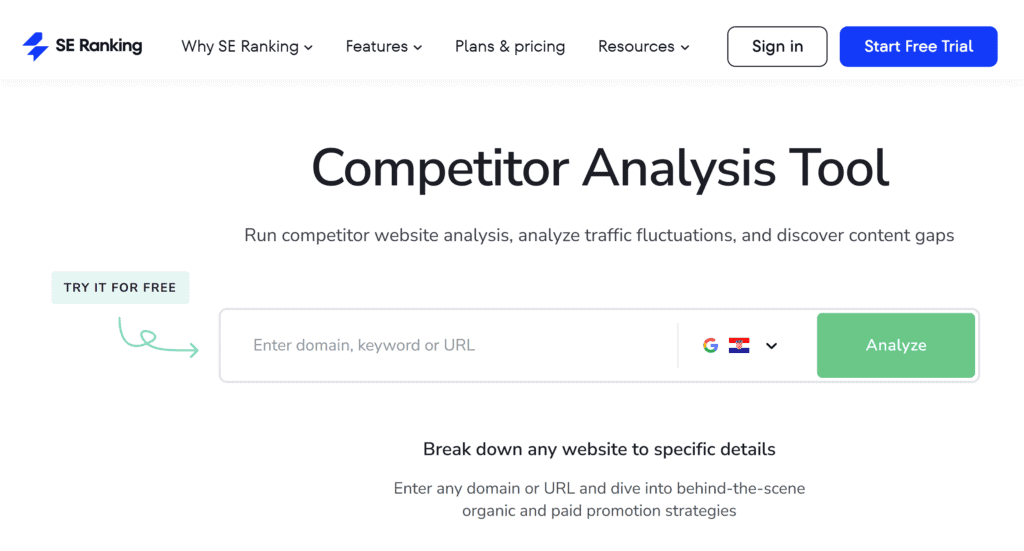
It won’t give you massive datasets, but it does deliver fast, clear insights into how a single competitor earns traffic.
See which keywords drive traffic, which pages perform best, and how rankings shift over time.
The tool also includes PPC data like sample text ads and estimated impressions.
Filtering options are flexible. Break results down by country, device, or search engine, which is helpful for regional targeting.
I’ve used SE Ranking to identify keyword gaps and track competitor growth. It’s also helpful for generating content ideas based on what’s already working in the space.
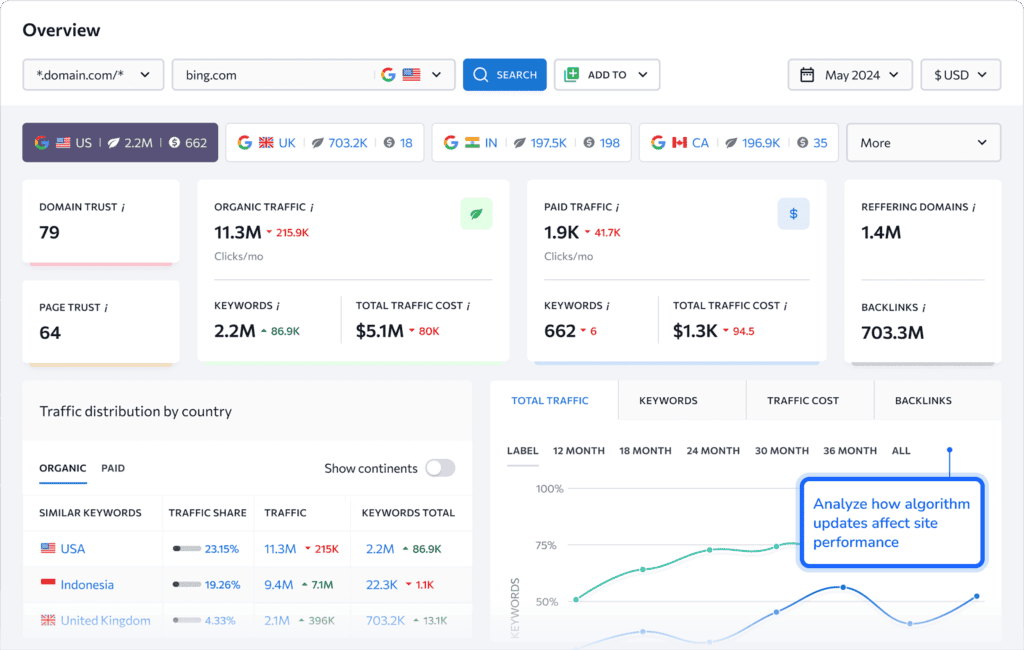
The tool isn’t built for large-scale market mapping. But for SEO teams or consultants working on a single domain or niche, it covers the essentials.
Who It’s Best For
SE Ranking works well for SEOs who want to track multiple competitors without juggling complex tech stacks.
It’s perfect when you need reliable traffic and keyword data across several domains. You still get solid intel without needing full-scale market modeling like you would in Similarweb.
Pros
SE Ranking gives you fast, reliable insight into what’s driving a competitor’s visibility. You can pull up top keywords, see the landing pages behind them, and spot opportunities to go after.
Filters make it easy to zero in on high-value terms or spot content appearing in rich results.
Plus, the all-in-one interface keeps things moving. It’s built to help you switch between research and monitoring without friction.
Cons
The historical data is limited unless you’re on a higher-tier plan. You won’t get multi-year trendlines or advanced segmentation by audience or channel.
And it doesn’t offer deep intel on referral traffic or off-site sources.
So, you may still need to pair it with another tool for the full picture.
How It Compares to Similarweb
Similarweb is designed for large-scale research. It’s best when you need to understand an entire market or analyze traffic patterns across industries.
SE Ranking isn’t built for that.
Instead, it helps you monitor how individual competitors are gaining visibility in search, without waiting on massive datasets or struggling through complex dashboards.
The platform is clean and responsive.
Move from keyword insights to rankings to page-level performance in seconds. This makes it ideal for weekly reporting and fast-turnaround audits.
Pricing
The Essential plan starts at $65 per month and includes competitor analysis and core SEO tools.
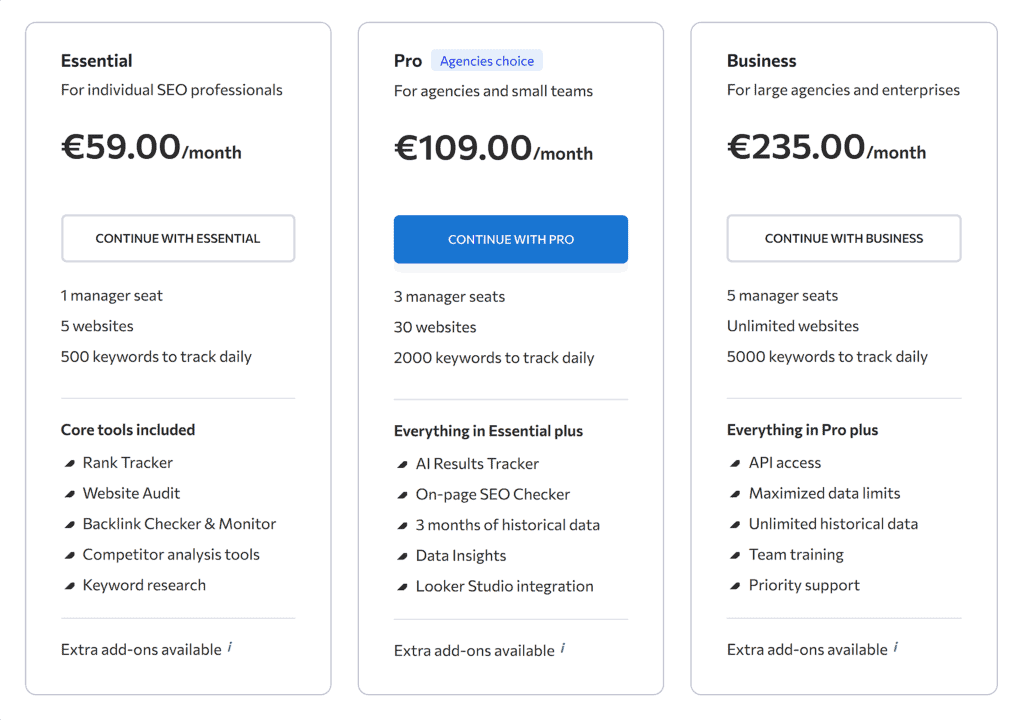
Higher-tier plans offer more data, limits, and user seats. You can try it free for 14 days — no credit card required.
Best Similarweb Alternative: My Recommendation
So, what’s the best Similarweb alternative? Semrush’s Traffic & Market Toolkit is hard to beat.
Other tools on this list are great for specific tasks, like tracking backlinks or analyzing keyword shifts.
But the Traffic & Market Toolkit brings it all together.
You get a full picture of how competitors grow, where they’re gaining traction, and how the broader market is moving.
It’s built for marketers who need clarity, not just data dumps.
If you’re making strategy decisions, pitching clients, or navigating a competitive space, this toolkit gives you what you need to act with confidence.
Start a free 14-day Semrush trial and see how it stacks up for your team.